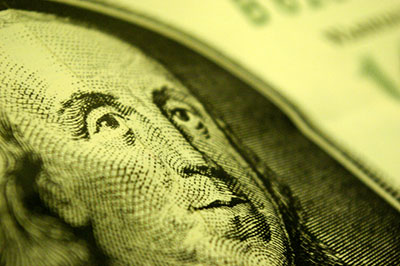
by Anderson & Vreeland
Anti-counterfeiting innovations and new ways to protect brands from fraud are being developed constantly in labs and research centers around the world to address what’s thought to be a growing threat: product counterfeiting and fraud. But one of the problems is that counterfeiters are sometimes so good at what they do, they can copy any obvious anti-fraud techniques.
New printing methods that are hidden within an element of a package are becoming more complex and more popular. Last December, the South Dakota Board of Regents announced the formation of a new research center based at the South Dakota School of Mines & Technologies: the Center for Security Printing and Anti-Counterfeiting Technology.
As reported by The Associated Press, the program was actually the unintended result of research into solar cells. When a graduate student created a QR code using the luminescent solar printing developed in the lab, that’s when the researchers realized the scope of potential applications for what they’d developed:
“The researchers realized that having a QR code that’s hidden in ambient lighting but is visible with a near-infrared laser would be of great interest to companies looking to protect their brands,” according to the story.
The center was kicked off with $300,000 in start-up funds from the state. Don’t be surprised if some major companies – the ones targeted by fraudsters – decide to kick in some money of their own to help develop the next generation of anti-counterfeiting technologies. They’re also researching printing codes on pharmaceutical pills in concert with specialists at South Dakota State University.
In other developments, NanoTech Security recently announced a partnership with ITW Security Division to add NanoTech’s KolourOptik technology to their security products. From the release: “KolourOptik uses advanced nano-structures imprinted on a materials surface to secure and authenticate products.”
InkSure Technologies, a company that’s developed a proprietary ink taggant, finished a research project in China late last year that tracked a consumer product along the entire supply chain.
This new device, developed at the University of Cambridge, uses inkjet printing to print liquid crystal lasers on almost any surface. According to the university, “… Each printed laser can be designed to give out its own unique optical signature. Because lasers can be printed on to all sorts of surfaces – such as plastic, paper, metal and glass – the technique could be used to authenticate a wide range of products.”
Finally, last year Domino Printing Sciences in the UK announced their new product, BK652, an ink developed for security purposes that dries in less than a second, and is targeted for manufacturing facilities that need to maintain their fast line speeds.
The EU has been more responsive than the US in requiring highly sensitive product manufacturers, like pharmaceutical companies, to provide security in the form of track and trace methods. But the US won’t be far behind as the problem of counterfeiting grows, so we expect more new products to come on the market that use printing for security.
Anderson & Vreeland provides customers with a solutions-based approach to business by offering innovative material and technological solutions in the flexographic industry. A nationwide staff of technical representatives is thoroughly knowledgeable about digital imaging and the fine point of flexo. For more information, call 866.282.7697 or visit www.andersonvreeland.com.
Reprinted with permission from Flexo Daily.

